Coronavirus (COVID-19): public attitudes and behaviours - April update
Findings from polling work, conducted between September 2021 and January 2022, on public attitudes and behaviours around the coronavirus pandemic in Scotland.
This document is part of a collection
6. Testing and self-isolation
This section presents the findings around testing, including:
- people's responses to coming into contact with Coronavirus and whether they self-isolated
- behaviours around testing, including over the festive period
- reasons for testing
- recording of tests online, and reasoning why (not)
Self-isolation
Respondents who had some experience or possible contact with Coronavirus were asked what they did on the most recent occasion (Figure 39). At 5-6 October, around two thirds (66%) of respondents said that they were already self-isolating or immediately self-isolated as a result of coming into contact with someone who had Coronavirus. This increased at 16-17 November to 78% and stabilised mid-December at 77%. 24% reported on 5-6 October they had continued as normal, on 14-15 December this had fallen to 20% (please note the small sample sizes).
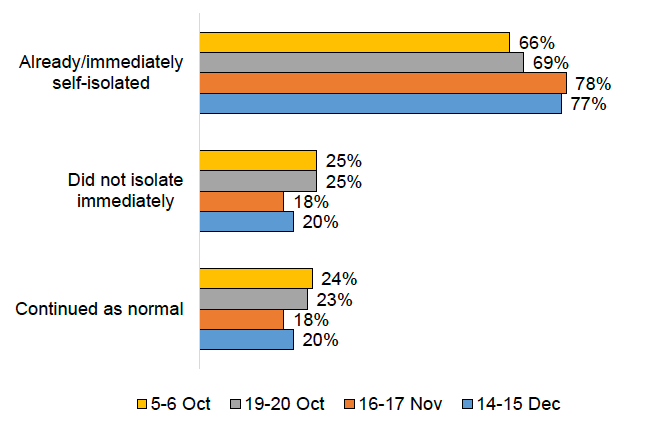
Source: YouGov Scotland Survey. Base: Adults who had some experience of or possible contact with Coronavirus (n=134-186)
Testing for COVID-19
Respondents were asked if they had taken either a rapid 'Lateral Flow Device' (LFD) test or a PCR test in the past week.
There was an increase in the use of COVID-19 testing over time (Figure 40). On 21-22 September, 44% had taken a COVID-19 test in the past week. On 4-5 January this had risen to 64%, reflecting increased testing over the festive period and in light of the rise of the Omicron variant. On 18-19 January testing had then declined slightly to 58%.
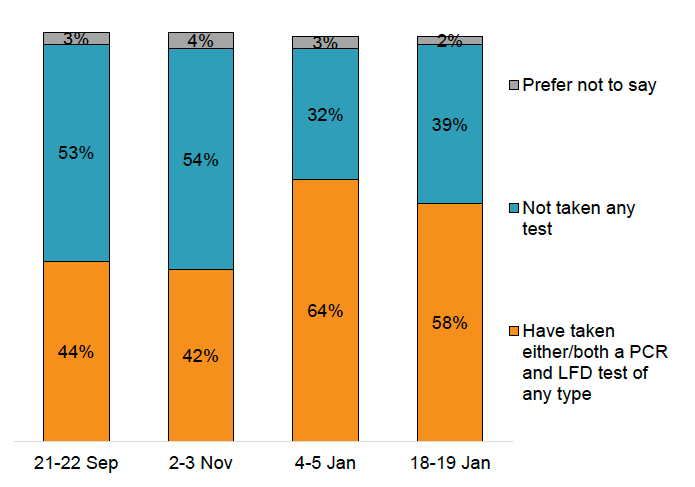
Source: YouGov Scotland Survey. Base: Adults (n=1002-1012)
Breakdown of testing behaviour by test type and result
Between 21-22 September and 18-19 January there was an increase in the use of LFD testing, with the highest reported use on 4-5 January 2022 (Figure 41). On 21-22 September, 38% of respondents had taken a LFD test and tested negative, and 1% a LFD test that tested positive. On 4-5 January 57% had taken a LFD test that was negative, and 3% positive.
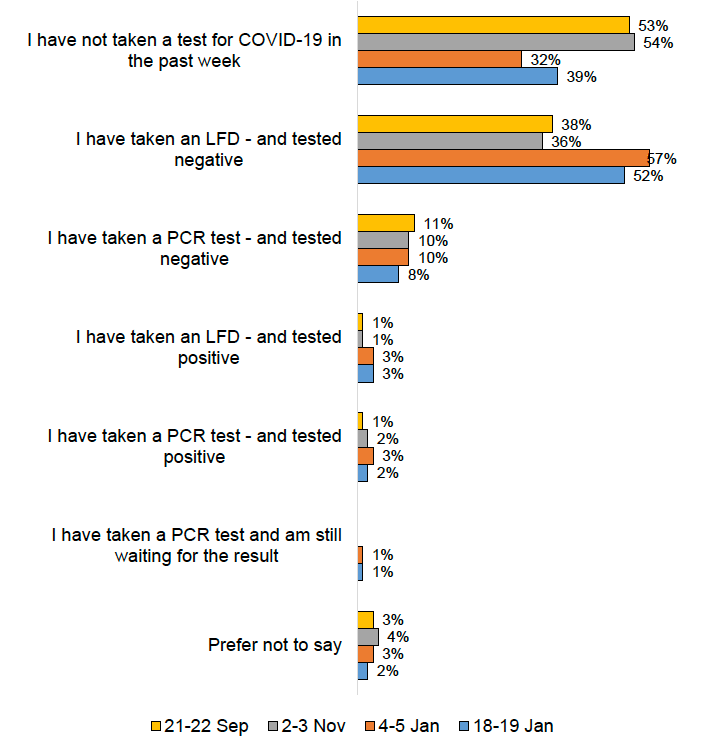
Source: YouGov Scotland Survey. Base: Adults (n=1002-1012)
Reasons for taking a COVID-19 test
Respondents who had taken a COVID-19 test in the past week were then asked what their reasons were for taking one (selecting all that applied). At 4-5 January, the most common reason for taking a COVID-19 , according to 42% of respondents, was to reassure before or after socialising with friends, family or work colleagues (Figure 42). The second most popular reason for testing was to generally reassure themselves that they didn't have COVID-19 (39%).
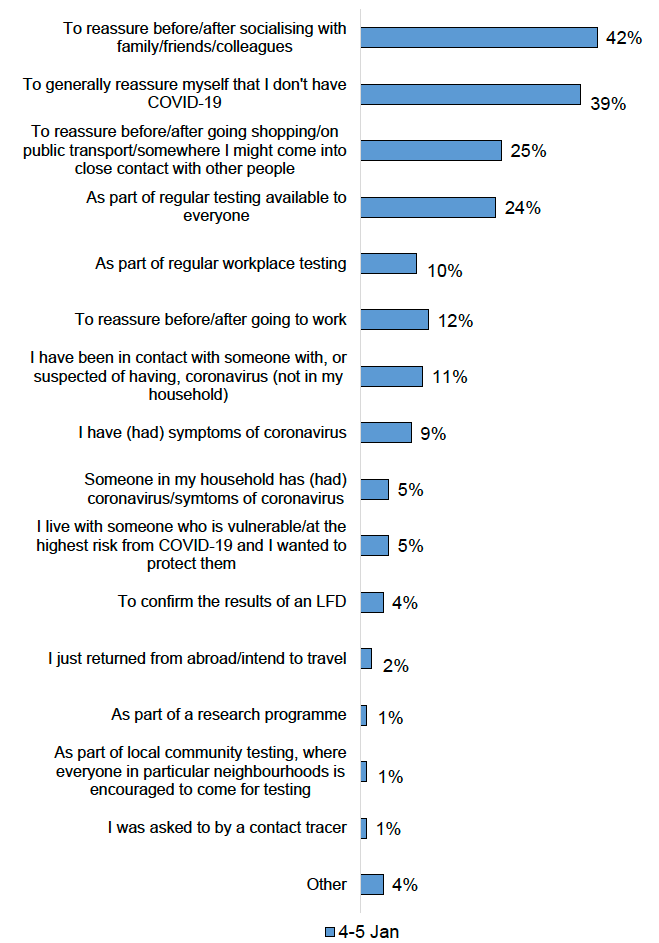
Source: YouGov Scotland Survey. Base: Adults who have taken a test in the past 7 days (n=663)
Recording LFDs online
Respondents who had taken a LFD test were also asked if their results were recorded online (Figure 43). There was a decrease in the proportions of respondents who had recorded their results online (within 24 hours of taking the test). This decreased from 53% on 5-6 October to 40% on 4-5 January and 43% on 18-19 January.
The Scottish Government announced on 5 January 2022 that those who test positive with a LFD no longer need to get a confirmatory PCR test.[17] This change makes online recording of LFDs increasingly important.
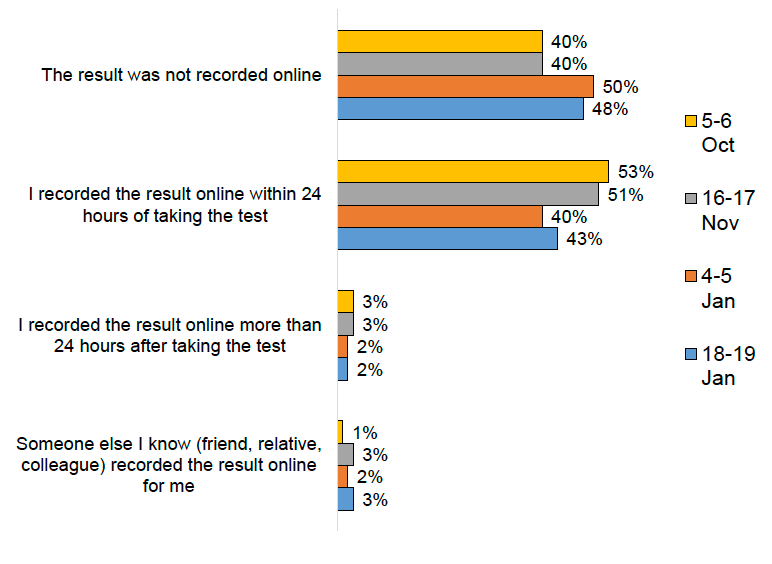
Source: YouGov Scotland survey. Base: Adults who have used a test (n=550-620)
At 4-5 January, respondents who said they did not record the result of their most recent LFD test online were asked why not (Figure 44). 28% said that they did not think it was important to record the result, and 24% said they forgot to record it. 22% did not know that they needed to record the results.
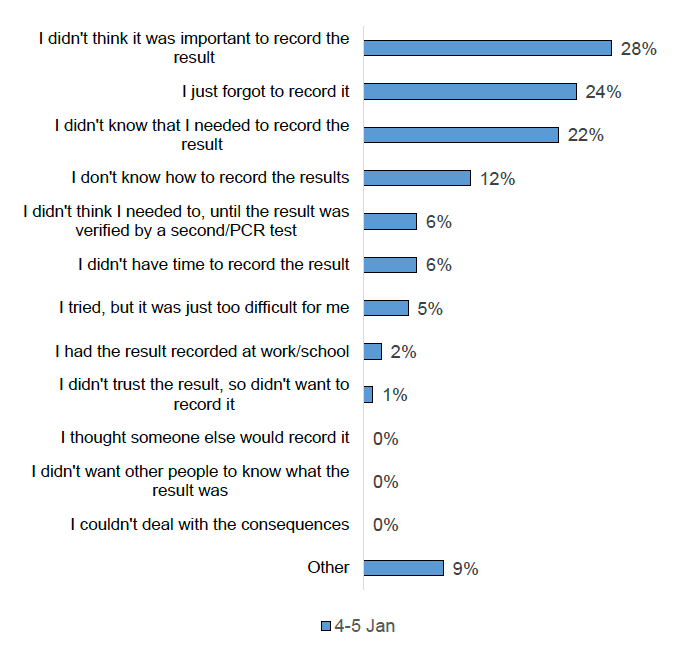
Source: YouGov Scotland survey. Base: Adults who did not record the results online themselves (n=327)
Testing over the festive period
Respondents were asked on 14-15 December about their plans for taking COVID-19 tests over the festive season. They were then asked on 4-5 January about what COVID-19 tests they had taken in this period. As shown in Figure 45, on 14-15 December, 38% of respondents strongly agreed that they would take a test before meeting with others over the festive season, and 28% tended to agree. On 4-5 January, 43% of respondents said they had taken a test before meeting with others on all occasions over the festive season (i.e. over the past two weeks). Almost three quarters (73%) of respondents said they had taken a COVID-19 test on at least some occasions before meeting with others.
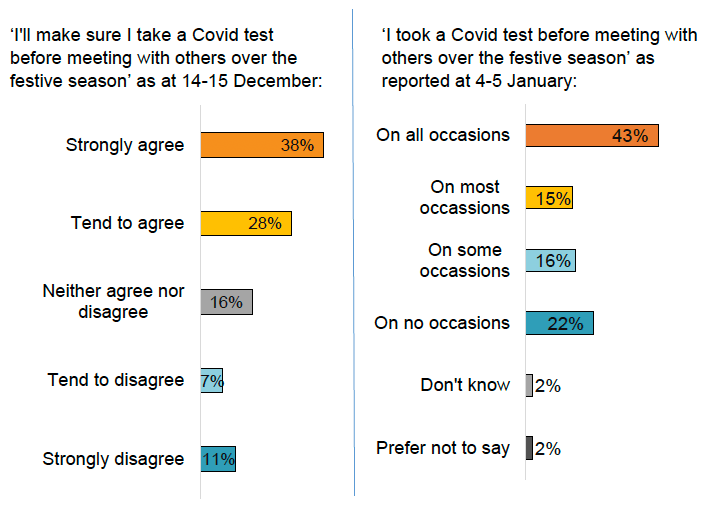
Source: YouGov Scotland Survey. Base: Adults excluding those who said 'not applicable' (n=929 on 14-15 December, n=788 on 4-5 January)
Contact
Email: covid-19.behaviours@gov.scot
There is a problem
Thanks for your feedback